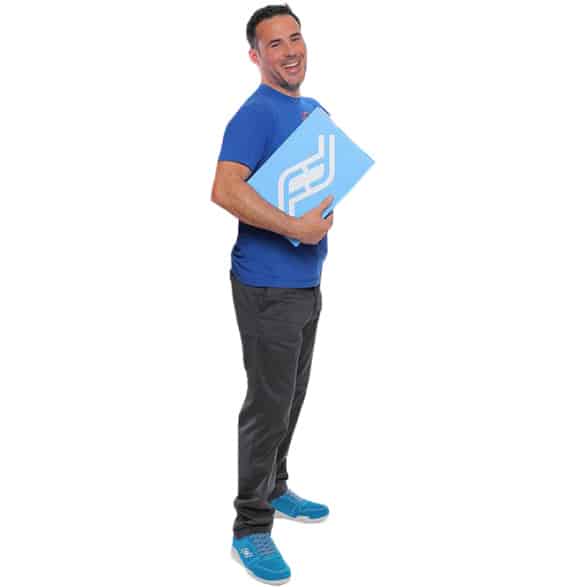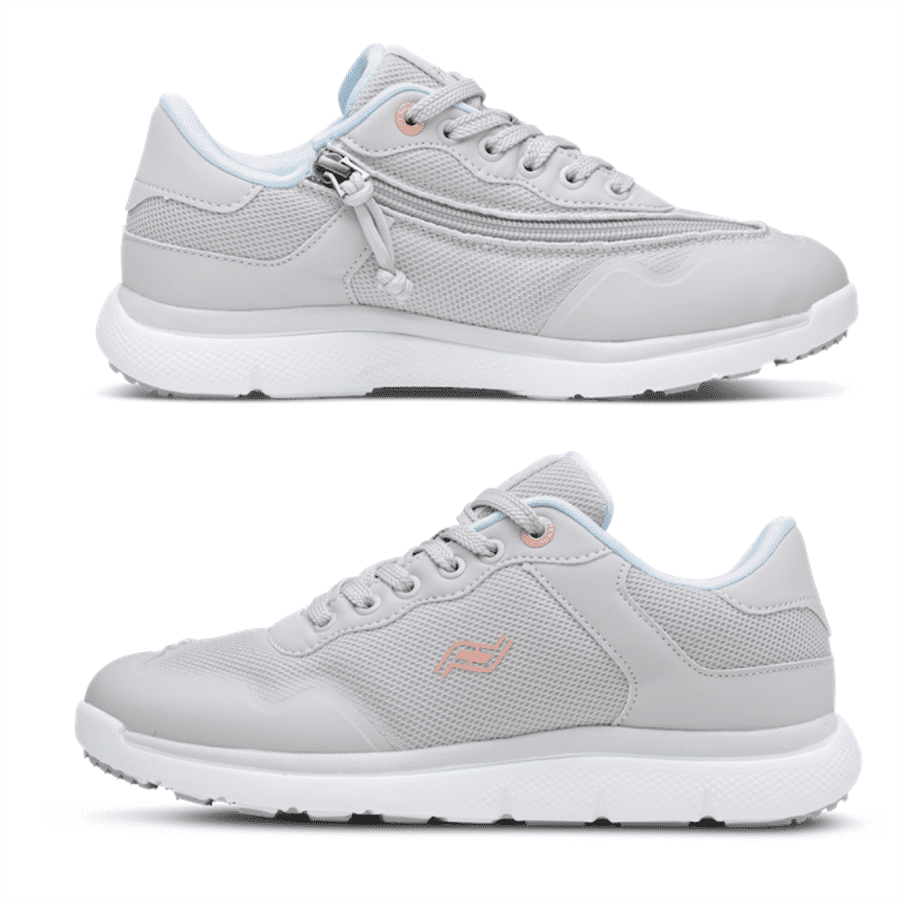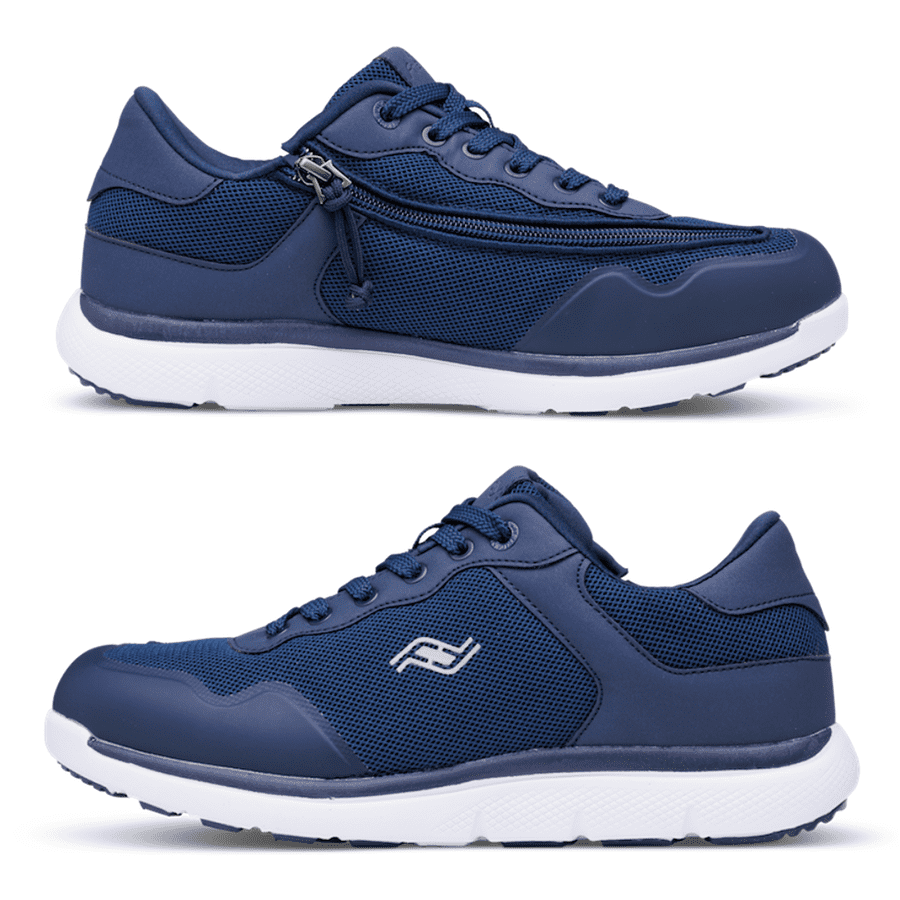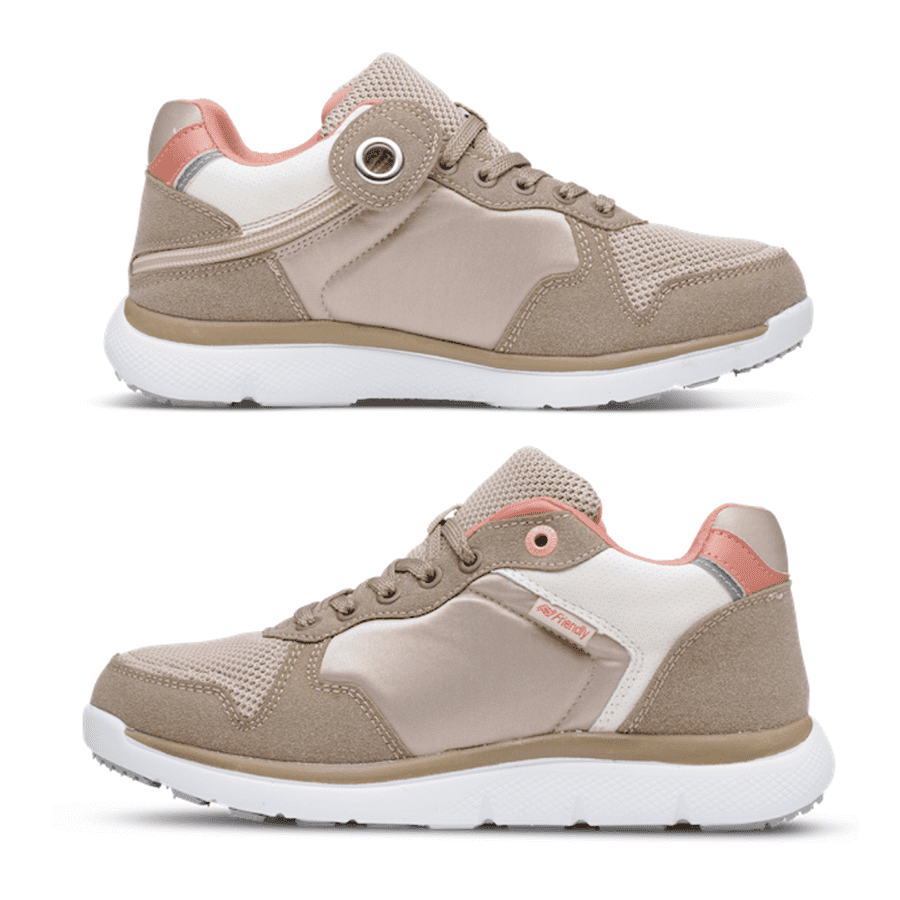EXCLUSIVE: Putting your best foot forward – Why now is the time for adaptive footwear

Joseph DiFrancisco, Occupational Therapist and Founder of Friendly Shoes, discusses the growing adaptive footwear market.
Life requires footwear, and putting on shoes is among the most essential activities of daily living. Yet, as a practicing occupational therapist, I witnessed a huge range of individuals who struggled putting on and fitting the shoes they want and need to flourish.
Until a certain age, even the most precocious children struggle with footwear. On the other end of the spectrum, virtually all older adults will struggle with footwear even without a distinct physical or neurological condition. In between, a huge portion of us will experience injuries, accidents, or adverse diagnoses, the effects of which are likely to include difficulty performing putting on our shoes.
The shoe industry’s response historically has been the loathsome “old man” shoe: oversized, over-width, velcro, single colour, BORING. Even if my patients could put these on, they typically did not fit well and they surely did not want to wear them. Furthermore, the mere realisation that the shoes were “there” diminished self-concept.
I saw the need for attractive, accessible footwear for this divergent population, but it didn’t exist. So, in 2014 I took a hacksaw to a trainer trying to help a single patient access his work shoes so he could continue supporting his family. I didn’t know it then, but Friendly Shoes was born that day.
My vision was footwear attractive enough for anyone and accessible to almost everyone. It had to look, feel, and work as well as modern footwear but also accommodate the challenges my patients experienced. I knew it would be a valuable tool for my colleagues to help their patients increase functional independence and quality of life. So, I began building shoes from the minds of therapists for the needs of our patients. I named my company Friendly because friendly means helping others, and that’s what our shoes do.
Common myths about adaptive footwear
Adaptive is for disabilities
The big myth is that adaptive footwear is for disabilities or advanced age users. Reality is that the same features that help accommodate challenges presented by physical, neurological, and age-related conditions can benefit anyone. After all, who really enjoys tying laces multiple times per day or wearing oversized or loosely tied shoes simply to avoid lacing and make donning easier?
Accessible footwear that adapts to user needs or preferences substantially improves over traditional footwear, so long as essential style, comfort, and support are not sacrificed.
Brands, such as Friendly Shoes, that combine 21st century convenience and adaptability with modern style and comfort present compelling advantages that may be attractive to any person. The fact that an able-bodied person may opt for style, comfort, or adaptability – the same shoe that can accommodate donning challenges and orthotics – is what makes it inclusive.
Specialist shoes are unattractive
To be fair, historically, this has been true. Times, however, are changing. While there are only a small number of authentically adaptive footwear companies, including Friendly Shoes, these offer a wide range of styles and colours as attractive as any other brand. As real adaptive companies grow, we will continue to see more styles, widths, and specialty adaptations meeting more patient needs.
Who benefits most from adaptive footwear?
Donning challenges
From a clinician/therapist perspective, individuals experience footwear challenges due to a huge variety of injuries, conditions, or diagnoses. Older adults experience generalised weakness, loss of dexterity, diminished eyesight, and bending difficulties. Numerous neurological challenges, from cerebral palsy to Parkinson’s and strokes, cause tremoring, loss of mobility, and functional endurance challenges.
Fitting challenges
Wide feet, bunions, specialty insoles, orthotics/AFO, intermittent swelling, age-related changes, and variations in foot size rule out the majority of available footwear for huge portions of the population. Footwear that can adjust in width and depth helps accommodate these challenges, and many of these individuals simultaneously experience donning challenges.
Carers/families
Let’s not forget the substantial reduction in carer/family burden from easier footwear and the time and cost savings to facilities by making a tedious task faster and easier. Adaptive footwear helps make a difficult aspect of caregiving easier.
What to look for in adaptive footwear
Effective access technologies: One size does not fit all nor how we put on footwear. Technologies enabling access from multiple positions with different donning strategies accommodate more types of challenges than hands-free gimmicks, which can be unsafe for certain adaptive populations.
Adjustability: Tension opportunities, removable insoles, and free-floating tongues help accommodate differently sized feet, variability in swelling, thicker socks, inserts, and orthotics to provide proper fit.
Lightweight: Many of the medical challenges that make donning and fitting difficult also affect strength and endurance. Lightweight shoes encourage active living and make mobility easier.
Durability: Orthotics are hard on shoes. Toe-drag is a common symptom of numerous conditions. Heavyset individuals place extra strain on footwear. Cheap zippers break. Look for YKK zippers and brands that directly communicate with customers and clinicians to solve problems.
Smooth interiors: If shoes are hard to put on so are socks. Smooth interiors accommodate barefoot use, ensuring that even if an individual can’t put on their sock, they can access appropriate footwear for safe mobility. Smooth interiors are crucial for individuals with hypersensitivity, especially prevalent in autism. Look for brands without interior tags.
Slip resistance: This is a must for safety and stability.
The role of healthcare professionals in adaptive footwear
Adaptive footwear is not a panacea solving all that ails anyone. Adaptive footwear is tools for users and clinicians to accommodate functional challenges. Clinicians play an important role in using their trained, professional lens to work with patients, demonstrating multiple donning techniques, training patients in proper use (e.g. pull zippers back not out), and problem solving on a case-by-case basis to overcome challenges.
We have seen therapists build-up pull tabs, remove insoles, customise lace settings, and, most importantly, train the user in donning strategies from different positions, enabling them to independently don and fit their shoes.
Where do I find adaptive footwear?
When I began the Friendly journey, there were zero adaptive brands and zero adaptive retailers. Today, more and more retailers tout a selection of adaptive products, including footwear. We are proud to have been part of building awareness of the needs of the adaptive community and offering best-in-class adaptive products. Friendly Shoes are available in eight countries.
Moreover, several of our distributors, including in the United Kingdom, are themselves therapists who learned about Friendly Shoes online, immediately recognised how they would benefit their patient communities, and reached out to us requesting to introduce Friendly to their countries. This authentic, grassroots, organic distribution may be slower than million-shoe orders from established retailers, but we value the interest and participation of clinicians more than anything else.
The Friendly Shoes Spring/Summer ’23 collection has just launched, featuring several new colours of popular styles. Our Autumn/Winter ’23 line goes into production shortly.
Please follow our social media in the USA and UK for updates and inspiring stories featuring individuals whose lives are being positively impacted by Friendly Shoes. We value clinician input and welcome your outreach. Thank you for being Friendly.
@friendlyshoesuk
www.friendlyshoes.co.uk
@friendlyshoesus
www.friendlyshoes.com




